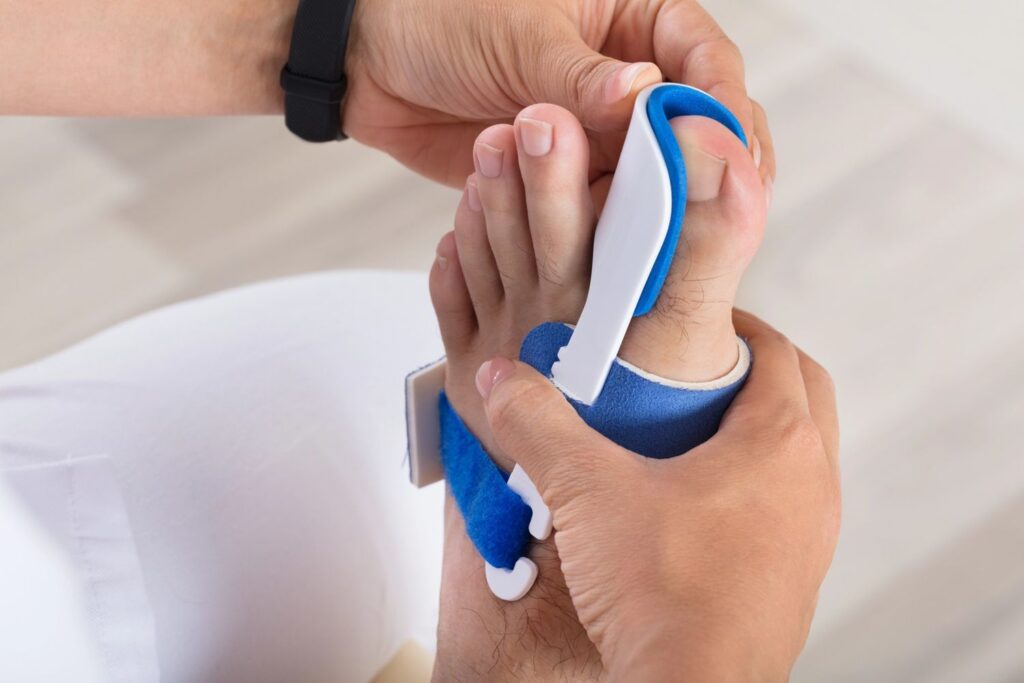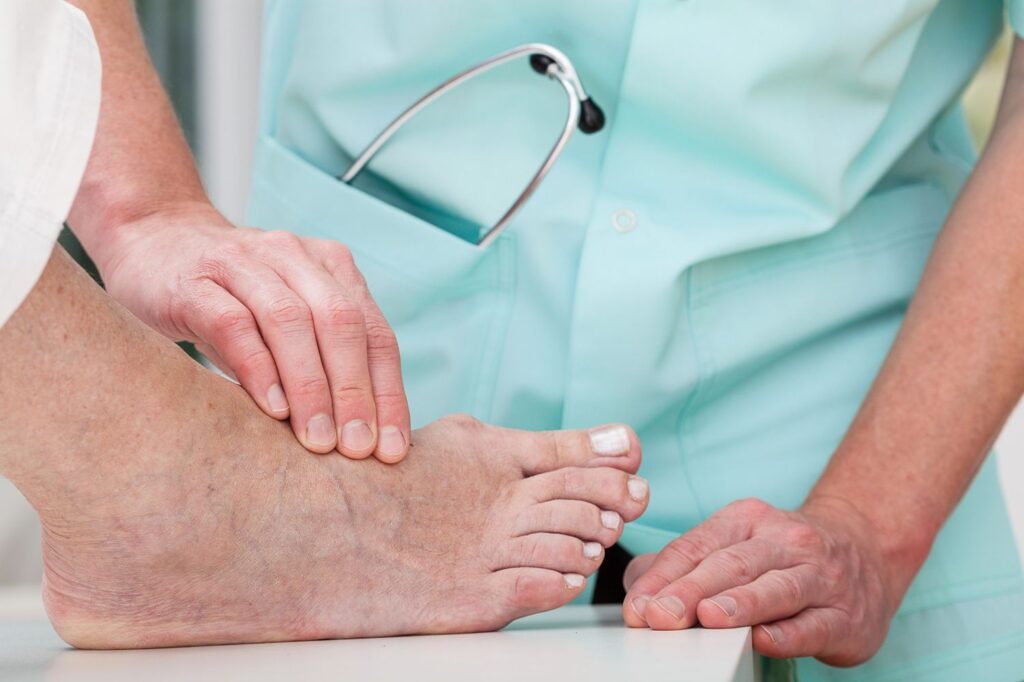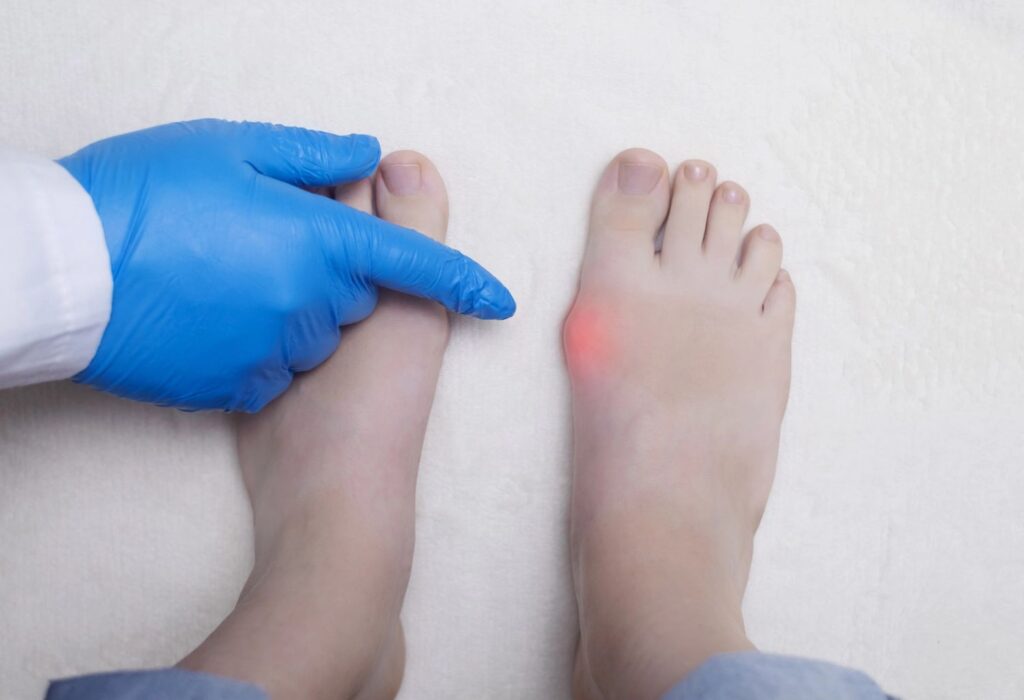Recovering from bunion surgery requires patience, proper care, and awareness of what can slow down or disrupt the healing process. While the procedure helps restore foot alignment and relieve pain, your choices in the days and weeks after surgery play a major role in how well you recover.
In this guide, we’ll discuss what to avoid after bunion surgery, from physical activities to footwear mistakes, diet choices, and more. Whether you’ve just undergone surgery or are preparing for it, understanding these precautions can make all the difference in achieving long-term comfort and mobility.
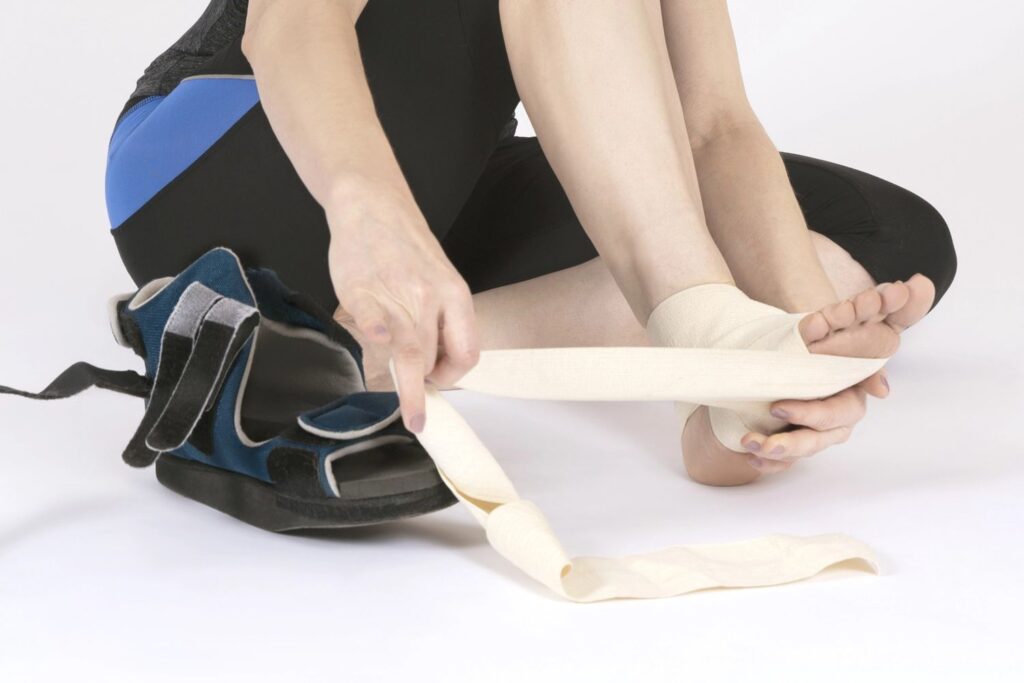
Understanding Bunion Surgery and the Healing Process
Before looking at the “don’ts,” it’s helpful to understand what bunion surgery actually involves. A bunion, also called hallux valgus, is a bony bump that forms at the base of the big toe, often causing the joint to move out of alignment.
Bunion surgery (known medically as a bunionectomy) aims to realign the joint, remove excess bone, and relieve discomfort. Depending on your condition, your podiatrist may use techniques such as osteotomy (cutting and realigning the bone) or arthrodesis (joint fusion).
After surgery, your body begins the healing process immediately. This phase is delicate to your bones, soft tissues, and tendons are adjusting to new positions. Knowing what to avoid during this time helps prevent setbacks and ensures a smoother recovery.
1. Avoid Putting Weight on Your Foot Too Soon
One of the most common mistakes patients make after bunion surgery is walking or standing on the affected foot before it’s ready. Early weight-bearing can:
- Shift the alignment of your big toe joint
- Cause swelling, pain, or delayed bone healing
- Lead to surgical site complications
Your podiatrist at Vital Podiatry Foot and Ankle Specialist will guide you on when it’s safe to put weight on your foot. You may need to use crutches, a walker, or a special post-operative shoe for a few weeks. Always follow your provider’s advice closely, recovery timelines vary depending on the type of procedure performed.
2. Avoid Tight or Unsupportive Footwear
Once you start walking again, it’s tempting to slip into your regular shoes. However, wearing tight, narrow, or high-heeled footwear can undo the progress made during surgery.
Why this matters:
After bunion correction, your foot needs room to heal in its new alignment. Shoes that squeeze your toes can create friction, irritate incisions, and put pressure on the healing joint.
What to wear instead:
- A wide-toe box shoe to reduce pressure on your toes
- Soft, breathable materials to prevent irritation
- Low heels or flat shoes with good arch support
Your podiatrist can recommend the best post-surgery footwear options based on your recovery stage.
3. Avoid Ignoring Swelling and Inflammation
Swelling is normal after bunion surgery, but ignoring persistent or excessive swelling can delay recovery. The tissues around your foot need time to adjust, and managing inflammation helps reduce pain and promote circulation.
Avoid these mistakes:
- Standing for long hours
- Skipping ice therapy
- Forgetting to elevate your foot
What to do instead:
- Elevate your foot above heart level several times a day
- Apply ice packs for 15–20 minutes at a time (with a cloth barrier)
- Follow prescribed anti-inflammatory medications if advised by your podiatrist
Taking these steps helps maintain comfort and minimizes complications.
4. Avoid Skipping Follow-Up Appointments
Follow-up appointments are not just routine, they’re key checkpoints in your recovery. Some patients, especially when they feel better, assume they can skip them. This is a common error that can lead to unnoticed complications such as:
- Improper bone healing
- Infection around the incision site
- Misalignment recurrence
During follow-ups, your podiatrist at Vital Podiatry Foot and Ankle Specialist will monitor your progress, assess your gait, and adjust treatment if needed. These visits also give you a chance to ask questions about activities, footwear, or any discomfort you’re experiencing.
5. Avoid Getting the Surgical Site Wet Too Early
Another important rule: keep your incision dry until your podiatrist clears you to shower normally. Moisture can introduce bacteria and increase the risk of infection.
Avoid:
- Taking baths or swimming before stitches are removed
- Soaking your foot in hot tubs or pools
- Applying lotions or creams over the incision without medical approval
Once your stitches are removed and the wound is closed, you can gently clean the area as directed. Always pat the site dry, never rub.
6. Avoid High-Impact Activities and Exercise Too Soon
It’s understandable to want to get back to your active lifestyle quickly. However, resuming sports, running, or heavy exercise too early can stress your healing bones and tissues.
High-impact activities can:
- Reopen surgical wounds
- Cause inflammation around the joint
- Delay bone union or cause recurrence of bunions
Most patients can return to low-impact exercises like stationary cycling or swimming after a few months, depending on recovery. Your podiatrist will provide a safe timeline based on your specific case.
7. Avoid Neglecting Pain Management
Pain is part of the healing process, but unmanaged pain can affect mobility, sleep, and recovery speed. Some patients stop taking their pain medication prematurely, thinking it’s unnecessary.
Instead, follow your doctor’s instructions carefully. Pain management might include:
- Prescribed medication or over-the-counter pain relievers
- Ice therapy and elevation
- Wearing compression socks to support circulation
Remember, managing pain doesn’t just keep you comfortable—it helps your body heal better because you’re less likely to overcompensate or move incorrectly.
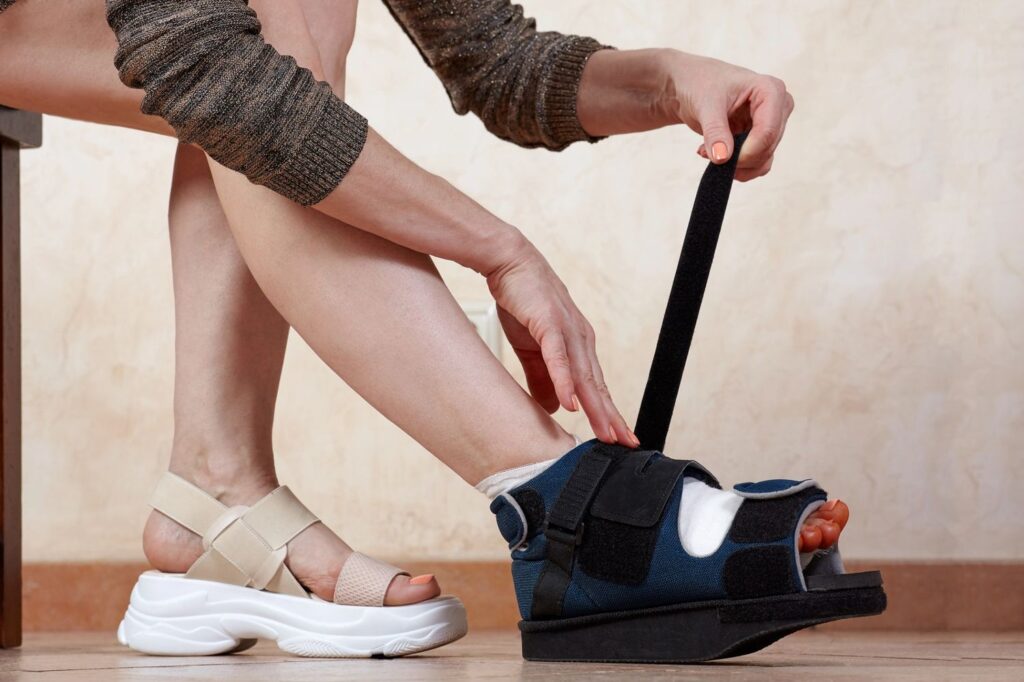
8. Avoid Smoking and Alcohol
Smoking and excessive alcohol intake can slow down healing and increase the risk of complications.
Why to avoid smoking:
- Nicotine reduces blood flow, which delays bone and tissue repair.
- It increases the risk of infection and poor wound healing.
Why to avoid alcohol:
- Alcohol can interfere with prescribed medications.
- It can also dehydrate your body and slow tissue recovery.
If quitting smoking feels challenging, talk to your doctor for support. Even reducing your intake during recovery can improve outcomes significantly.
9. Avoid Ignoring Physical Therapy or Home Exercises
After bunion surgery, regaining flexibility and strength in your foot is an essential part of rehabilitation. Some patients skip physical therapy because they feel fine but this can lead to stiffness or limited motion later on.
Your podiatrist or therapist may recommend gentle stretching and strengthening exercises once your incision heals. These help:
- Improve joint mobility
- Restore balance and walking pattern
- Reduce stiffness in your big toe
Commit to your home exercises as prescribed. It’s one of the most effective ways to prevent recurrence of bunion-related discomfort.
10. Avoid Poor Diet and Dehydration
A healthy diet supports tissue repair and bone healing after bunion surgery. Poor nutrition or dehydration can slow your recovery and make you feel fatigued.
Foods to focus on:
- Protein-rich foods like chicken, fish, eggs, and legumes
- Calcium and vitamin D for bone healing (milk, yogurt, leafy greens)
- Vitamin C for collagen formation (oranges, strawberries, bell peppers)
What to avoid:
- Excessive sugar and processed foods
- High-sodium snacks that can cause swelling
- Too much caffeine or alcohol, which can affect hydration levels
Staying well-nourished helps your body rebuild stronger tissues around your foot joint.
11. Avoid Driving Too Early
Driving after bunion surgery can be risky especially if your right foot is affected. Reaction times may be slower due to pain, stiffness, or limited mobility. It’s also unsafe to operate pedals with a surgical shoe.
Check with your podiatrist before resuming driving. Most patients can drive again once they can bear weight comfortably and are no longer taking narcotic pain medications.
12. Avoid Neglecting Emotional and Mental Recovery
Surgical recovery isn’t just physical, it can be mentally challenging too. You might feel frustrated, bored, or anxious about your mobility. This emotional fatigue is common but manageable.
What can help:
- Stay connected with family and friends
- Follow your recovery routine and celebrate progress
- Ask your podiatrist if post-surgery counseling or support groups may help
Acknowledging your emotions can make your recovery journey smoother and more positive.
When to Contact Your Podiatrist
Even with proper care, you should contact your podiatrist right away if you notice any of the following:
- Persistent swelling or redness around the incision
- Fever or chills
- Unusual pain that doesn’t improve with rest or medication
- Discoloration or numbness in your toes
At Vital Podiatry Foot and Ankle Specialist, your health and comfort are our top priorities. Early communication helps us address potential problems before they become serious.
Why Westbank Residents Trust Vital Podiatry Foot and Ankle Specialist for Expert Bunion Surgery
When foot pain starts to interfere with your daily routine, every step can feel like a challenge. At Vital Podiatry Foot and Ankle Specialist, we understand how frustrating bunions can be—and we’re here to help you walk confidently again. Our experienced bunion surgery doctors in Westbank specialize in restoring comfort, balance, and mobility with precision-based treatment and personalized care.
1. Board-Certified Podiatrists with Proven Expertise
Our team of highly trained podiatrists brings years of experience in diagnosing and correcting bunions using advanced surgical techniques. We take a comprehensive approach—focusing not just on the bunion itself, but also on the structure and function of your entire foot—to ensure long-term results.
2. Patient-Centered, Personalized Care
Every foot is different, and so is every patient. That’s why our bunion surgery plans are fully customized to your needs. From your initial consultation to post-surgical recovery, we prioritize your comfort and provide clear, step-by-step guidance to help you heal properly.
3. Advanced Surgical Technology for Better Outcomes
At Vital Podiatry Foot and Ankle Specialist, we use state-of-the-art equipment and minimally invasive techniques to reduce downtime, minimize scarring, and speed up recovery. Our goal is to help you return to your active lifestyle without pain holding you back.
4. Compassionate Care in a Comfortable Setting
We believe medical care should be as comforting as it is effective. Our Westbank clinic offers a welcoming environment where patients feel heard, respected, and cared for at every stage of treatment.
5. Comprehensive Foot and Ankle Care Beyond Surgery
Whether you’re managing foot pain, recovering from surgery, or seeking preventive care, we offer a full range of podiatric services. We help patients maintain strong, healthy feet through ongoing guidance and follow-up care tailored to each individual.
Experience the Difference with Westbank’s Trusted Bunion Surgery Specialists
Choosing the right podiatrist for your bunion surgery is an important decision—and your comfort, mobility, and confidence depend on it. At Vital Podiatry Foot and Ankle Specialist, we combine medical excellence with compassionate care to deliver results you can trust.
Take the first step toward pain-free living today.
Schedule your consultation with the leading bunion surgery doctors in Westbank at Vital Podiatry Foot and Ankle Specialist—because your feet deserve expert care and lasting comfort.
Vital Podiatry Foot and Ankle Specialist Serving the Westbank Community and Beyond in Houston
Vital Podiatry Foot and Ankle Specialist is dedicated to serving the diverse needs of the local community of Houston, including individuals residing in neighborhoods like Westbank. With its convenient location near landmarks such as TheFrazier Elementary School and major intersections like West Rd and Little River Rd. (coordinates: 29.90344,-95.52173), we offer Bunion surgery Doctors services.
Get Bunion Surgery Doctors Services At Westbank Now
CALL US NOW!
(281) 937-4546
Navigate from Westbank to Vital Podiatry Foot and Ankle Specialist Now
Conclusion
Recovering from bunion surgery is a process that requires patience, care, and attention to detail. While the surgery corrects the structural issue, your post-surgical habits determine how successful the outcome will be. Avoiding common mistakes such as walking too early, wearing tight shoes, skipping follow-ups, or neglecting wound care can significantly improve your recovery timeline and comfort level.
Healing properly also means taking care of your overall well-being. That includes maintaining a balanced diet, managing swelling, following your physical therapy plan, and communicating openly with your podiatrist. Small steps like these prevent complications and help you get back on your feet faster literally and figuratively.
At Vital Podiatry Foot and Ankle Specialist, we’re committed to helping patients recover safely and confidently after bunion surgery. Our team provides personalized care plans, detailed guidance, and expert support at every stage of recovery. With the right precautions and professional follow-up, you can look forward to lasting relief, better mobility, and healthier feet for years to come.
FAQs
1. How long should I avoid putting weight on my foot after bunion surgery?
The recovery timeline depends on the type of bunion surgery performed. Most patients need to avoid putting full weight on their operated foot for about 2 to 6 weeks. During this time, your podiatrist may recommend using crutches, a knee scooter, or a post-operative shoe. Always follow your surgeon’s instructions closely to avoid setbacks in healing.
2. When can I start wearing regular shoes again after bunion surgery?
You can typically return to regular footwear after 6 to 8 weeks, depending on your recovery progress. However, avoid tight, narrow, or high-heeled shoes until your podiatrist confirms it’s safe. Opt for wide, supportive shoes that give your toes enough space and prevent pressure on the healing joint.
3. Is it normal to experience swelling after bunion surgery?
Yes, swelling is completely normal and can last for several weeks or even months. To manage it effectively, keep your foot elevated, use ice packs, and limit standing for long periods. Persistent or worsening swelling should be evaluated by your podiatrist at Vital Podiatry Foot and Ankle Specialist, as it could signal inflammation or other issues.
4. What activities should I avoid after bunion surgery?
Avoid high-impact activities like running, jumping, or heavy workouts until your doctor clears you. These movements can stress the healing bones and delay recovery. You should also avoid driving too soon, getting your incision wet, and wearing unsupportive shoes. Following these precautions helps protect your surgical results.
5. What can happen if I ignore post-surgery care instructions?
Ignoring your podiatrist’s recovery plan can lead to infection, poor wound healing, or bunion recurrence. Skipping follow-ups, walking too early, or wearing improper shoes can all impact how well your foot heals. Proper post-surgical care ensures you regain full mobility and long-term comfort after your bunion correction.







